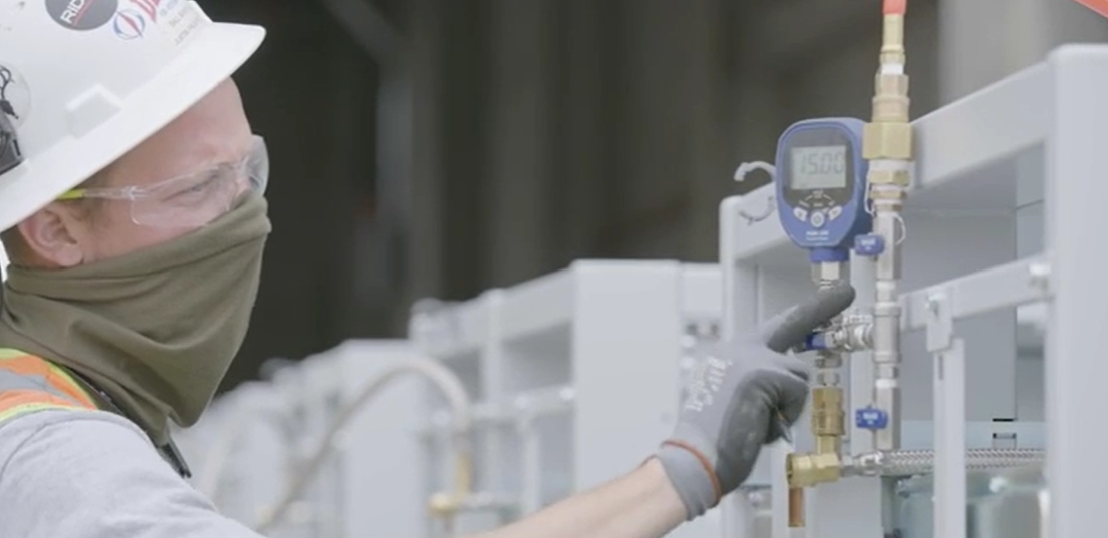From pv magazine USA
The world’s largest lithium ion battery, the Moss Landing Energy Storage Facility, has been shut down due to a cascading series of unfortunate events, which may have resulted from a failed fan bearing giving off smoke, according to a press release by Vistra Corp.:
“Smoke was detected by VESDA (smoke-detection apparatus) units in the vicinity of cores 64, 57, 47 and 41, causing water to be released to preaction zone 24 and stopping the flow of electrical current through the affected cores (an automated process referred to as E-Stop). Due to an apparent programming error in the VESDA, these actions occurred at detected smoke levels below the specified design level at which water was intended to be released and E-Stop was intended to be initiated.”
The very early VESDA notification set off a water release action. This action caused a water-based battery heat suppression system to activate. Unfortunately, when the couplings on flexible hoses of this system failed, water sprayed directly onto additional battery racks, causing short circuiting and arcing, which damaged the batteries and made more smoke. The additional smoke set off more alarms and caused even more water to spray from the failed couplings.
Vistra notes that during the construction process, there was some pressure testing that occurred. For instance, the preaction header piping and the piping on each battery rack underwent separate pressure testing. However, Vistra has been unable to confirm that the contractor pressure tested the complete heat suppression system after the racks were connected to the header pipes.
Popular content
In the end, 7% of the facility’s batteries were damaged by water, along with other infrastructure. Notably, there was no temperature increase noted in any battery modules at any time during the incident.
There are two battery facilities owned by Vistra on the site. The smaller, and newer, 100MW/400 MW facility was not affected. The original, larger, 300MW/1.2 GWh structure was where the incident occurred.
The 300MW facility is broken down into three 100MW arrays, with 98 cores, and 4,539 racks, holding 99,858 modules of batteries. Each battery module, part number M48290P5B (4P) on the LG Energy website, is housed within the new TR-1300 double wide form factor. LG’s JH4 battery cell populates these units. Each module holds 14.9kWh of 72.5Ah JH4 cells, while the just over 5,000 pound TR1300 holds 327kWh of energy.
A video released by LG Energy showcasing the TR 1300 briefly highlights the fire-suppression system (starting at 2:46). The fire-suppression system includes a standard water sprinkler system. A separate water-based heat-suppression system that is specifically designed to protect against thermal runaway in individual battery modules is also deployed. This system has carbon steel header pipes that are connected by flexible hoses to piping on each rack.
This content is protected by copyright and may not be reused. If you want to cooperate with us and would like to reuse some of our content, please contact: editors@pv-magazine.com.


1 comment
By submitting this form you agree to pv magazine using your data for the purposes of publishing your comment.
Your personal data will only be disclosed or otherwise transmitted to third parties for the purposes of spam filtering or if this is necessary for technical maintenance of the website. Any other transfer to third parties will not take place unless this is justified on the basis of applicable data protection regulations or if pv magazine is legally obliged to do so.
You may revoke this consent at any time with effect for the future, in which case your personal data will be deleted immediately. Otherwise, your data will be deleted if pv magazine has processed your request or the purpose of data storage is fulfilled.
Further information on data privacy can be found in our Data Protection Policy.